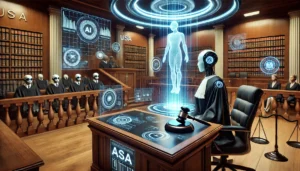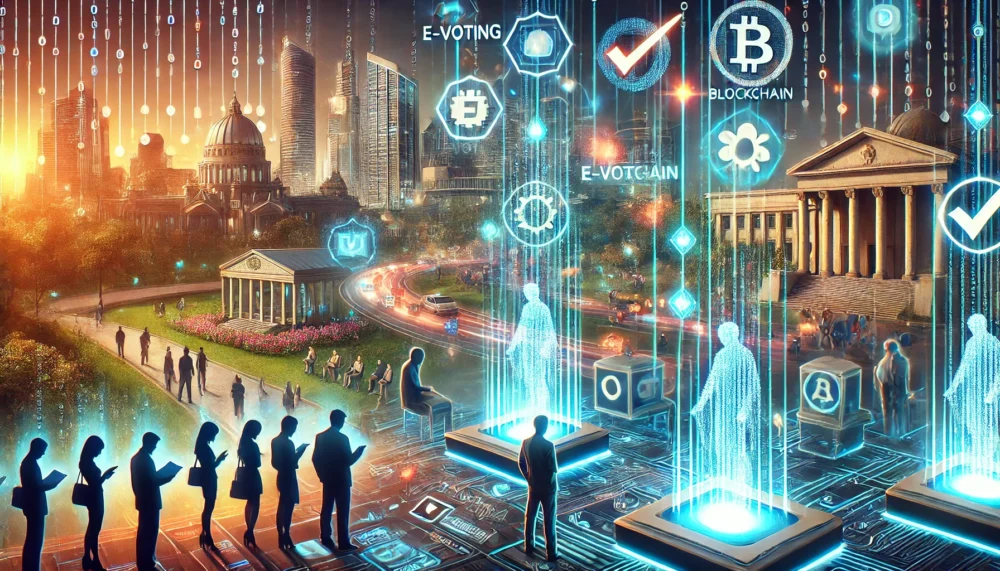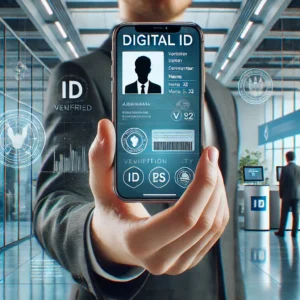
Ever wonder if, one day, a digitally rendered “judge” might preside over your court case via video call? This scenario, once confined to the realm of sci-fi, is quickly creeping into reality. Across the globe, AI judges and virtual court hearings are transforming legal systems, sparking debates about ethics, efficiency, and the potential risks of automated justice. With each passing year—especially as we surge forward into 2025—our collective reliance on artificial intelligence in judicial processes feels more like an inevitability than a novelty.
In this deep dive, we’ll explore how governments, research labs, celebrities, older generations, and the ever-exuberant youth are reacting to these seismic changes. Along the way, we’ll touch on the specific legal frameworks emerging in various regions, examine new “virtual justice” pilot programs, and pay special attention to the ethical debates swirling around so-called machine-based adjudication. If you’re intrigued, anxious, or maybe just curious, join the ride. The face of the law is changing—and it’s wearing a digital, data-driven expression.
Table of Contents
- A New Dawn: Why AI Judges Are Making Waves
- Virtual Court Hearings: The Rise of Online Justice
- Government Briefings and Political Headlines
- Voices from Research Labs: Scientists Weigh In
- Celebrities Stepping into the Debate
- Older People’s Perspective: Hope, Skepticism, and Adaptation
- Youth Sentiment: Bold Enthusiasm or Hesitant Trust?
- Ethical Quagmires in Automated Justice
- Legal Challenges and Frameworks on the Horizon
- Global Trends in AI-Based Judicial Systems
- Societal Ripple Effects and Equality Concerns
- Tech Innovations: The Cool, the Quirky, and the Alarming
- Bridging the Gap: Training Judges and Lawyers in AI
- Best Practices for Digital Justice
- FAQs
- Final Thoughts & A Friendly Nudge Forward

1. A New Dawn: Why AI Judges Are Making Waves
It wasn’t so long ago that the notion of an AI judge felt like an outlandish fantasy, something you’d expect in a late-night science fiction marathon. But, as societies grow more comfortable with tech handling sensitive tasks—think of telemedicine for diagnoses or AI-driven financial advising—the next logical leap for many is letting artificial intelligence handle legal disputes.
On a basic level, AI judges leverage machine-learning algorithms to evaluate evidence, apply statute-based logic, and render decisions. They might even glean nuances from existing case databases far more quickly than a human judge can. According to Cambridge University’s research on AI adjudication, certain European courts have begun experimenting with AI-driven systems to handle high-volume, low-stakes issues (like small claims or administrative complaints).
But wait, you might ask: “How can an AI interpret the complexities of law, the intricacies of human empathy, or the moral dimension of each case?” And that’s precisely where the friction starts. While the computational prowess of AI is undeniable, its capacity for fairness, compassion, or context is harder to quantify. The line between objectivity and bias can blur in ways both subtle and far-reaching.
2. Virtual Court Hearings: The Rise of Online Justice
Ever since the global pandemic accelerated the digitization of just about everything, virtual court hearings have evolved from temporary stopgap measures to permanent fixtures of modern legal infrastructure. In the last few years, entire legal systems have recognized the logistical advantages of remote hearings—participants can appear from anywhere, documents are shared electronically, and scheduling becomes infinitely more flexible.
A piece from techUK’s insight on virtual court hearings notes that many courts in the UK found remote hearings increased access to justice, especially for those who struggle with in-person attendance due to disabilities or living in remote locations. Even in developing countries, pilot initiatives are sprouting. The synergy is clear: If a witness or an accused can Zoom into a hearing, the entire timeline can shorten, fostering speedier resolutions.
However, not everyone is on board. Some critics argue that virtual courtrooms might trivialize or depersonalize the gravity of legal proceedings. They say nuance—like nonverbal cues or the intangible “atmosphere” of a courtroom—can be lost on a screen. Meanwhile, defenders retort that standardizing these digital processes democratizes access, freeing the courts from the constraints of geography and outdated bureaucracy.
3. Government Briefings and Political Headlines
Politics and law are forever intertwined, so it’s no surprise that AI judges and virtual court hearings have turned into hot-button issues on many government agendas. Recent proposals in the U.S. Congress call for clarity on the accountability of AI-driven rulings: Who is liable if an AI inadvertently promotes an unjust verdict? In the European Union, legislators are working to refine existing data-protection and AI regulations to cover the judiciary’s new digital frontier. Over in Asia, some governments appear to welcome AI-based adjudication with open arms, focusing on efficiency gains—particularly in high-volume courts that handle thousands of cases daily.
Back in 2024, a high-profile senator openly championed the use of “digital justice solutions” to unclog the judicial backlog. The senator pointed to IBM’s blog on AI in judicial systems to highlight how advanced analytics can expedite case resolution. Critics, however, question whether such an approach might turn trials into “algorithmic exercises” devoid of human empathy.
In some countries, we see friction between younger politicians, who see AI judges as an inevitable step in tech progress, and older legislators, who fear a potential dystopia where humans cede too much power to machines. This tension underscores a broader generational gap about technology’s place in the public sphere.
4. Voices from Research Labs: Scientists Weigh In
Venture deep into a university AI lab, and you might hear one researcher praising machine-learning models for their speed and consistency, while another laments the challenges of bias in training data. Indeed, the scientific community is somewhat divided on the prospect of handing real judicial authority to an algorithm.
- Optimists: Some researchers at top institutions see AI judges as a logical step to bring consistent rulings, reduce corruption, and speed up slow bureaucracies. They note that properly trained neural networks can identify patterns of discrimination or favoritism better than a tired human judge.
- Skeptics: Others highlight how AI’s decision-making can reflect prejudices embedded in the data sets. If past legal rulings were racist or sexist, the system might inadvertently replicate those biases on a larger, more efficient scale. Then there’s the real possibility of overreliance—should we trust an AI’s logic if it’s not fully transparent?
According to UNESCO’s exploration on AI courts, bridging these perspectives demands rigorous oversight, interdisciplinary research, and robust feedback loops. The best approach may lie not in replacing human judges altogether, but in harnessing AI as a tool that augments, rather than supersedes, human judgment.
5. Celebrities Stepping into the Debate
If there’s one thing celebrities excel at—besides entertaining crowds—it’s amplifying public debates. Over the past few years, several prominent figures have weighed in on the topic of AI judges and virtual court hearings:
- A famous pop star known for activism posted an impassioned message, praising remote hearings as a lifeline for domestic abuse survivors reluctant to appear physically in court with their abusers.
- Another high-profile actor blasted the concept of “robotic justice,” warning that empathy and compassion could never be programmed. He suggested that such a system might disregard the unique emotional contexts of each case, turning it into a cold read of data.
Their fans, meanwhile, have lit up social media with a flurry of opinions—some calling for more advanced digital solutions in the justice system, others decrying any attempt to place final authority in the hands of an AI. One might brush off celebrity perspectives as fleeting, but in reality, they can shape public sentiments and fuel activism efforts that eventually influence legislation.
6. Older People’s Perspective: Hope, Skepticism, and Adaptation
Imagine sitting down for tea with your grandparents—some might recall a time when even having a color television in the living room was a big leap. Now they’re grappling with the idea that an online hearing platform could stand in for a grand courthouse, or that an AI might eventually pass judgments on criminal defendants.
- The Skeptics: A good portion of older adults are naturally cautious. They might worry about data privacy, or fret that an algorithm could never truly understand the moral nuances that come with life experience.
- The Pragmatists: Others welcome the convenience of virtual hearings, especially if mobility issues or health concerns make traveling to court physically challenging. They’re relieved that technology can be harnessed to reduce long wait times and the labyrinthine procedures of traditional courts.
- Navigating Tech Tools: For older citizens, the complexity of digital platforms can be daunting—will they remember passwords, or manage to present evidence in a secure online portal? Ensuring user-friendly interfaces is crucial if we want to avoid alienating an entire generation.
You might overhear an older relative say, “As long as there’s a real person overseeing it all, maybe AI can help with the grunt work.” Indeed, the desire for a human element rarely disappears, no matter how advanced the software.
7. Youth Sentiment: Bold Enthusiasm or Hesitant Trust?
At the other end of the spectrum are the younger folks, many of whom grew up FaceTiming friends and browsing social media as second nature. Virtual interactions to them are routine. So the concept of a virtual court hearing doesn’t necessarily spark the same kind of alarm bells.
- Enthusiasts: Some see AI-based adjudication as a futuristic, forward-thinking approach that can strip away old-school red tape. They argue that algorithms, if developed ethically, might be less susceptible to bribery or personal biases that plague certain legal systems.
- Doubters: Yet even tech-savvy youth can be skeptical about letting an AI’s code overshadow the empathy a living judge provides. They might question the transparency of the black-box model, or fear an era of “faceless justice” that reduces defendants to mere data points.
- Activism: Student communities at law schools frequently call for “algorithmic accountability,” demanding that these AI models undergo rigorous audits. They want the chance to question or challenge an AI’s verdict, just as they would cross-examine a human judge.
It’s not uncommon to see campus protests labeled “Code Isn’t Justice” or “Bring Back Humanity to the Bench,” side by side with hackathons that aim to refine or debug new online court platforms. This dynamic tension within youth culture underscores the complexities of adopting advanced tech in a time-honored institution.
8. Ethical Quagmires in Automated Justice
When a machine steps in to interpret the law, a tangle of ethical dilemmas arises. AI judges must navigate the same moral terrain that confounds human judges—only they do so based on algorithms and data sets, not years of practice or an innate sense of right and wrong.
- Bias in Data: If the historical records used to train the AI are rife with prejudice—racial, gender, or socioeconomic—the model could perpetuate those injustices at scale.
- Transparency: Many advanced AI models function as “black boxes.” Even their developers might not fully grasp how the system arrived at a particular decision. In a court of law, that lack of explainability can be deeply troubling.
- Accountability: Should a flawed AI decision lead to a wrongful conviction, who bears the blame? Is it the software developer, the judge who relied on the AI, or the government agency that purchased the system?
- Privacy: AI-driven tools often require massive swaths of personal data—social media posts, medical histories, or prior legal run-ins. Ensuring robust data protection is nonnegotiable if we hope to preserve civil liberties.
A thorough analysis by Thomson Reuters on generative AI literacy in courts underscores the necessity of developing well-defined ethical frameworks. Educating judges, clerks, and attorneys in AI fundamentals can help them spot red flags sooner, demanding accountability and clarity from the tech providers.
9. Legal Challenges and Frameworks on the Horizon
Given these ethical dilemmas, various legal frameworks are emerging worldwide. In the European Union, regulatory approaches often revolve around AI’s “trustworthiness”—ensuring compliance with data protection laws and fundamental rights. Over in the U.S., you’ll find a patchwork of state-specific guidelines, with states like California pushing for robust consumer privacy laws that also shape how AI is deployed in the courtroom. Asian nations such as Singapore are forging ahead with “sandbox” programs, letting courts test AI in controlled environments before adopting it at scale.
With that said, a paper from EUI’s perspective on AI in the courtroom and judicial independence highlights a crucial tension: as soon as AI steps into the judiciary, questions about independence arise. If a government invests heavily in a particular AI solution, might that system reflect political biases? Or might the coder’s assumptions seep into rulings, overshadowing established legal precedents?
In many jurisdictions, courts have started to adopt an “augmented intelligence” stance. Rather than handing the gavel entirely to an algorithm, they incorporate the AI’s analytical findings into a human judge’s final verdict, essentially bridging the gap between tradition and innovation.
10. Global Trends in AI-Based Judicial Systems
10.1 China’s Rapid Adoption
China, known for its tech-forward approach, has introduced online courts and AI tools that can reportedly handle routine legal matters. Some municipal courts boast virtual platforms that conduct entire procedures without a single person setting foot in a courthouse. Proponents say it slashes waiting times drastically, whereas critics worry about the “social credit” expansions creeping into the justice sphere.
10.2 Europe’s Cautious Progress
European nations value data protection and fundamental rights. Virtual hearings are embraced for convenience, but the idea of a fully automated judge remains controversial. Trials that leverage AI as a supplementary tool—like scanning large volumes of case law—are gaining traction, although final authority usually remains in human hands.
10.3 The Americas
From Canada’s slow but steady integration of remote hearings to the U.S.’s fragmented approach, the Americas exemplify the patchwork effect: some states or provinces experiment more boldly, while others cling to traditional in-person procedures. Meanwhile, in Latin America, a few pioneering courts adopt virtual hearing platforms to address backlogged dockets, but resources and Internet connectivity remain uneven.
10.4 Africa & Beyond
In parts of Africa, AI-based justice is just starting to trickle in, often through international partnerships and pilot programs designed to modernize local systems. The potential for leapfrogging is enormous—where conventional court infrastructure is scarce, an online framework might actually be more accessible. Yet concerns about digital literacy and stable electricity hamper immediate widespread adoption.
11. Societal Ripple Effects and Equality Concerns
Whenever you reshape a societal pillar like the justice system, the effects radiate outward. On one hand, virtual court hearings could offer a boon to individuals who previously found it difficult or impossible to attend in-person trials—like single parents lacking childcare or people with physical disabilities. On the other hand, the digital divide can leave those without reliable internet or modern devices at a disadvantage. If you can’t log in, you essentially lose your day in court.
Additionally, there’s the question of cost. While AI solutions might eventually drive down administrative expenses, the initial technology investments can be considerable. Wealthy countries or well-funded jurisdictions can afford advanced platforms, while poorer regions risk falling behind, inadvertently creating a two-tiered justice system.
Social justice advocates call for clear guidelines to ensure that adopting these tools doesn’t intensify existing inequalities. It’s not enough to say, “Hey, we’re modernizing!” The real question is, does everyone benefit, or just the well-resourced?
12. Tech Innovations: The Cool, the Quirky, and the Alarming
AI in legal settings isn’t monolithic. Some tools focus on data management—cataloging evidence, summarizing case files, or analyzing testimonies. Others go further, venturing into predictive analytics, attempting to forecast trial outcomes. Then there’s the frontier of generative AI for drafting preliminary judgments, effectively producing entire legal opinions before a judge signs off.
While this can significantly expedite routine tasks, the weirdness sets in when an AI-driven chat system starts responding to a witness’s statements or “advising” on sentencing. We see glimpses of this in some research labs exploring real-time language processing. A recent mention in the Thomson Reuters piece suggested that in the future, attorneys might consult “AI co-counsels” during proceedings, basically a digital second brain scanning legal precedents at warp speed.
But not all breakthroughs are rosy. Malicious actors could exploit these systems, hacking or manipulating AI to produce flawed outcomes. Security experts argue that as judicial data migrates online, we must bolster cybersecurity measures to ensure verdicts can’t be tampered with.
13. Bridging the Gap: Training Judges and Lawyers in AI
Implementing AI judges or even partial AI assistance demands a workforce that understands the technology beyond a cursory level. However, many current judges, lawyers, and court clerks are not AI experts. Bridging this knowledge gap becomes vital.
- Workshops and Seminars: Courts are hosting crash courses on data science and machine learning fundamentals. These programs aim to demystify the black box of AI and empower legal professionals to question algorithmic biases.
- Collaboration with Tech Firms: Start-ups specializing in legal tech now partner with courts to test pilot programs. Lawyers and judges can provide real-world feedback, while engineers refine the software to better reflect legal nuances.
- Ongoing Certification: Some jurisdictions propose mandatory AI-literacy certifications for any judge or attorney who wants to utilize or oversee AI-based adjudication. This ensures they know how to interpret and critique the machine’s logic.
The old adage “ignorance of the law is no excuse” is taking on a new twist: “ignorance of the AI’s functioning” might lead to serious miscarriages of justice.
14. Best Practices for Digital Justice
If you ask seasoned analysts, they’ll suggest a few best practices to keep AI judges and virtual court hearings in check:
- Human Oversight: Even if AI generates preliminary rulings, a qualified judge should always sign off. That ensures accountability and a final sense of human empathy.
- Transparency and Explainability: Developers must offer clear documentation about how the AI model reaches conclusions. This can help courts detect errors or biases.
- Data Privacy: Secure encryption methods, limited data retention, and robust user-consent policies are nonnegotiable for safeguarding personal information.
- Public Engagement: Encourage community feedback sessions and pilot projects, allowing real users to test and shape the systems before they become widespread.
- Periodic Audits: Independent bodies or specialized agencies can audit the AI’s decision patterns, checking for consistent fairness and accuracy.
These practices align with the ideas put forth in the UNESCO guidelines on AI courts and other reputable bodies concerned with the intersection of technology and law. The path to a fair, digital judiciary may be rocky, but these guardrails can make it safer.
15. FAQs
Q1: Are AI judges already actively deciding real cases?
In some jurisdictions, yes—albeit mostly for minor claims or administrative matters. Full-scale AI-based adjudication for criminal cases remains rare, usually existing only in pilot phases.
Q2: How do virtual court hearings ensure authenticity of evidence?
Typically, secure platforms are employed, with digital signatures and verified user identities. However, concerns about evidence tampering persist, so robust cybersecurity is essential.
Q3: Could AI judges replace human judges entirely?
Most experts doubt that total replacement is likely or desirable. Rather, AI tools often serve as decision aids, generating recommendations that a human judge reviews before issuing final rulings.
Q4: What if an AI makes a mistake in sentencing or liability?
The accountability question is a hot topic. Some frameworks hold the human judge or the government responsible, while others argue the tech vendor should share legal liability.
Q5: How do I attend a virtual court hearing if I lack stable internet?
Courts may offer phone dial-ins or designated “access points” with reliable connectivity. Yet digital inequality remains a real challenge that many legal systems are trying to address.
16. Final Thoughts & A Friendly Nudge Forward
AI judges and virtual court hearings aren’t just fancy terms anymore. They’re the vanguard of a justice system that’s slowly embracing automation, remote interaction, and machine-enabled rulings. Governments and politicians see them as either a panacea for clogged dockets or a harbinger of Big Brother. Research labs float between excitement and alarm, while celebrities broadcast their own stances to millions of followers. Elders worry about losing the human touch, youth champion accountability, and the rest of us stand somewhere in between—uncertain, but undeniably intrigued.
As 2025 unfolds, we’ll likely see more courts dabbling in AI-based adjudication, more lawyers cross-examining lines of code, and more heated discussions about whether empathy can be programmed. The real question is how we, as a society, navigate the moral and legal complexities while harnessing the powerful benefits. Will we strike the right balance, or overstep boundaries we can’t easily roll back?
If you’re as fascinated or concerned as I am, consider sharing your perspective with local advocacy groups or bar associations. Keep tabs on legislative proposals in your area—maybe write to your representative. After all, the courtroom of tomorrow will affect everyone, from big corporations in sprawling cityscapes to small-town residents seeking fair resolution. We might not fully control how technology evolves, but we can shape the regulations and social norms that govern it. And that, in a digital justice era, is the new frontier we all share.




